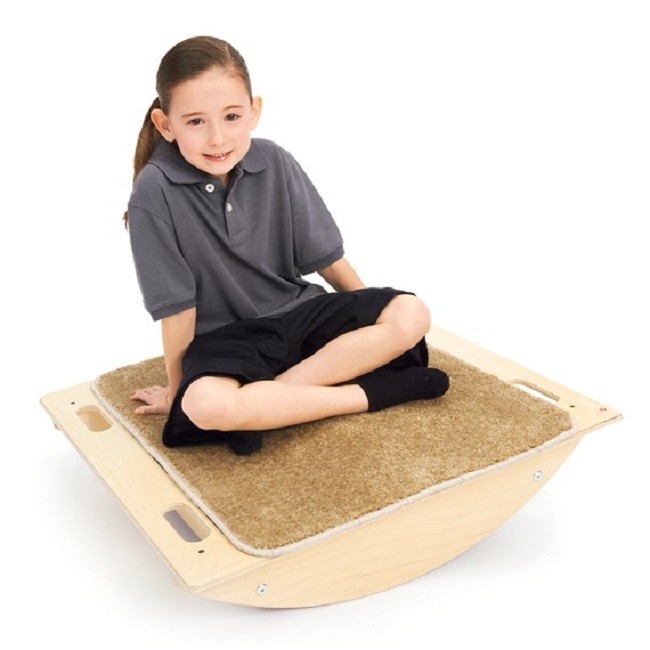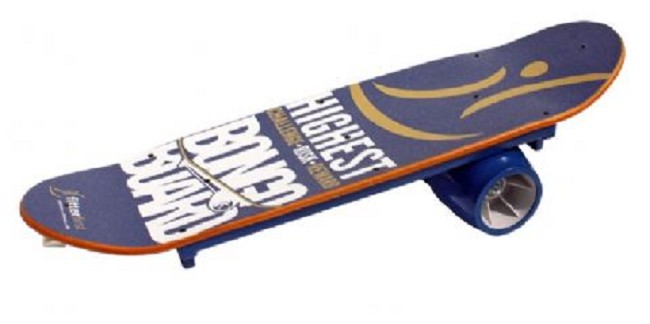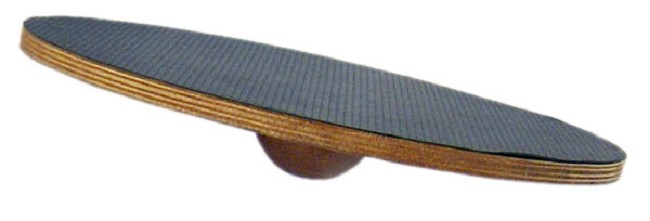| Product Model | Brand | View Best Price |
| #1: Bosu Balance Trainer Ball | Fabrication Enterprises | View Price |
| #2: Fit Balance Disc With Pump | J/Fit | View Price |
| #2: Fit Balance Disc With Pump | J/Fit | View Price |
Balance boards are a specialized form of medical and rehabilitation equipment that is used primarily for the purposes of improving balance and coordination, as well as developing strength in recovering regions of the body. This ability makes them ideal tools for developing or rehabilitating regions such as the ankles, knees, hips, back, and shoulders.
Balance boards are typically configured in one of two ways, depending on the region of the body that they are designed to train. The first configuration features a hard, flat top and an underside that is typically rounded and unstable (favoring one side or the other). The other conformation involves a soft, bubble-like top with a studded underside that does not allow for sliding.
For both conformations, patients may stand (or in some cases lay) on the top of the board and attempt to balance the board on its unstable underside. This is an extremely effective method of developing or rehabilitating weakened or injured regions of the body.
One example of a patient who might require a balance board would be a person who has injured or had a procedure performed on a body part such as the knee. This patient would likely use the balance board in his/her recovery to help regain the ability to use the knee and balance effectively.
As was previously noted, there are various types of balance boards, each with their own specific uses and benefits. Because of this, it is common for customers to feel unsure which balance board is the right one for their needs. To help ensure that you are getting the right product for you or your loved one, this section will go over a few important items to consider when making a purchase.
Balance boards are used for rehabilitating and strengthening important regions of the body. They very often are an important tool in the process of physical therapy for injuries to the legs, hips, back, or arms.
However, balance boards are not limited to these areas. They may also play a crucial role in developing or increasing the efficiency of things such as balance, coordination, motor skills, weight distribution, core strength, and even fall prevention. For patients working on these areas of rehabilitation, the use of a balance board for vestibular therapy—or therapy for improving balance and reducing issues related to dizziness or discoordination—is a must.
Joining their importance for vestibular therapy and rehabilitation following injury, balance boards may also be an extremely useful tool training outside of recovery. For example, balance boards are often used in dance studies to help gymnasts and dancers with their balance, and they can even be used by voice teachers to help demonstrate ideal posture.
Ultimately, to determine which balance board is best for your needs, we must examine the various different types of balance boards from which you can choose.

Rocker boards are one of the most common forms of balance boards, and they are typically the ones used most frequently in training and rehabilitation. They are constructed using a hard, flat top board with a focused fulcrum on the underside. This fulcrum may vary in size depending on the product, but its purpose is to act as the balancing line. The board will naturally fall to one side or the other, and the patient will practice his/her balance by trying to keep the board balanced on the fulcrum.

While very similar in construction to rocker boards, rocker-roller boards have one noticeable additional challenge. As their name implies, rocker-roller boards have an added rolling dynamic that makes them slightly different from their rocker board counterparts. Instead of a pointed, fixed fulcrum on the underside of the board, rocker-roller boards use a cylindrical, wheel-like, or rounded fulcrum that allows for the board to roll slightly (along with the standard side-to-side motions).
Given this additional rolling feature, rocker-roller boards are typically viewed as a slightly larger challenge to patients than a standard rocker board. Therefore, it is important to assess whether you or your loved one are ready for a rocker-roller board or if you are better suited to use a standard rocker board. Ask your doctor or physical therapist which board is best for your needs if you are unsure.

Similar in concept and construction to rocker-roller boards are sphere-and-ring boards. These boards use a sphere-like fulcrum that is separate from the board. The sphere fulcrum fits into a specific groove in the underside of the board that holds it in place during use. Then, just as is the case in rocker-roller boards, the user balances on the board with the added challenge of its ability to roll from side to side.

Wobble boards are quite different from rocker boards and rocker-roller boards in both design and function. While the previous boards are designed solely for side-to-side balancing, a wobble board is designed to challenge the 360-degree balance of the patient. To do this, wobble boards are constructed to tilt in any direction (as opposed to just left or right). This effectively helps the patient work on balance in all direction. Because they challenge the user’s balance in multiple directions, wobble boards are usually intended for those who are able to comfortably balance on rocker and rocker-roller boards.
How do I choose a Balance Board?
For the ease of determining which type of board is best for you, they can be broken down by their challenge to patients. A rocker board can be viewed as one of the easier balance board styles, and it is usually a good starting point for those who have never used a balance board before. Rocker-roller boards and sphere-and-ring boards can be viewed as the next step up in difficulty from rocker boards. They are usually ideal for patients who have used rocker boards and are ready for the next challenge. Finally, wobble boards can be viewed as one of the more challenging formats for balance boards, as they require users to test their 360-degree balance.
Balance boards play a crucial role in rehabilitating and exercising a patient’s balance and coordination. They can be a useful tool for rehabilitation, therapy, and even regular exercise. When making your purchase, take a look at Rehabmart’s selection of balance boards to make sure that you are getting the right tool for your needs.